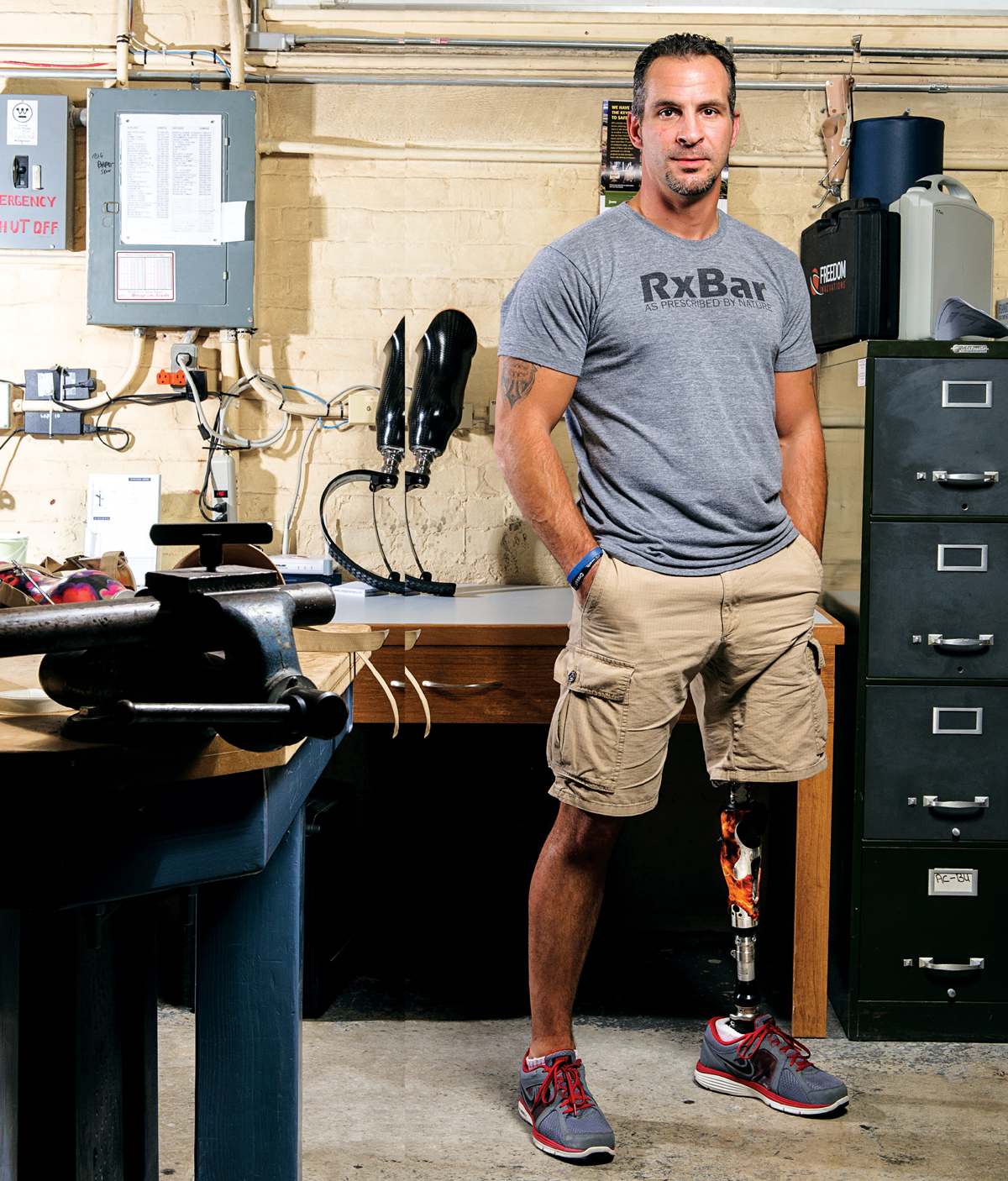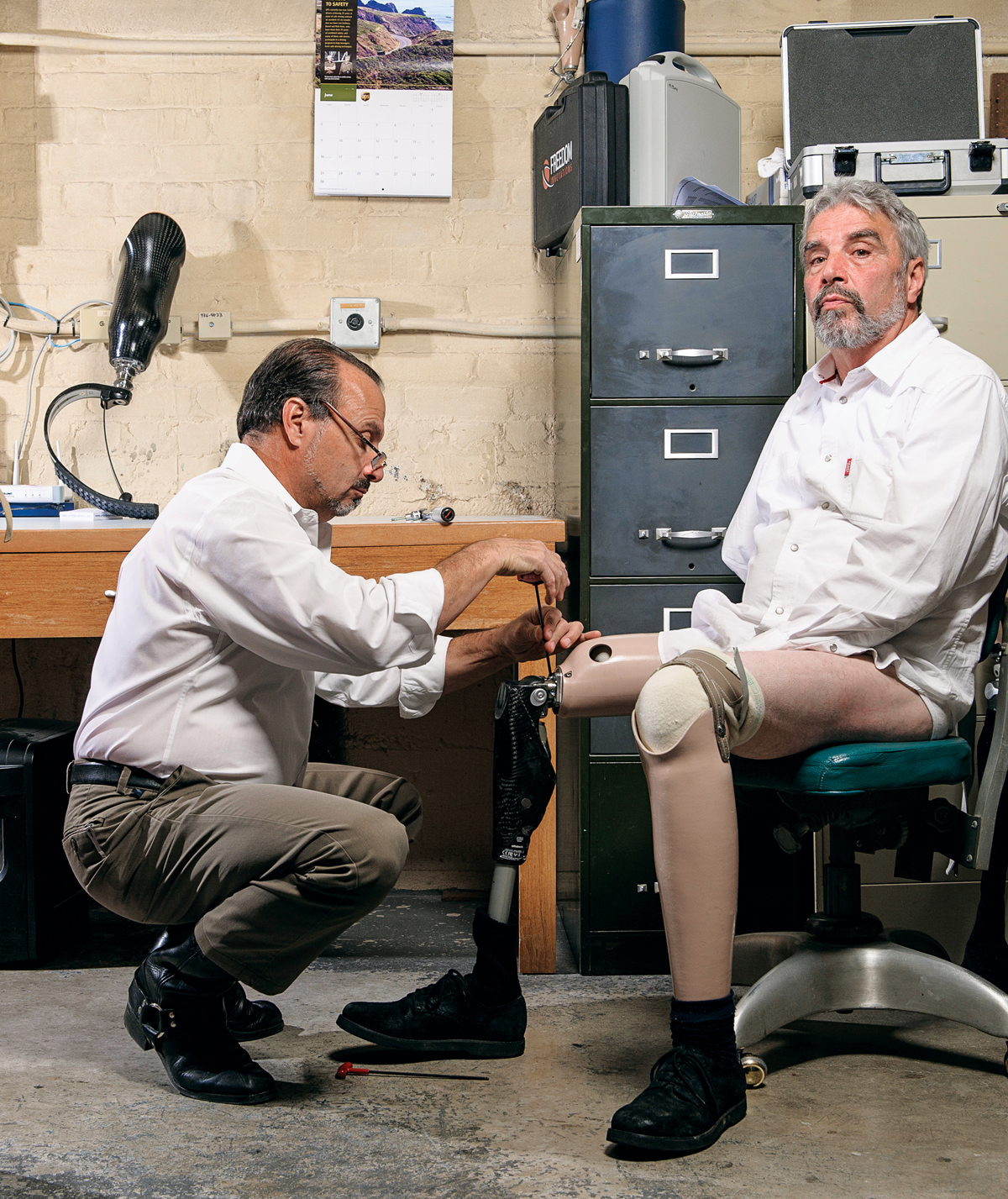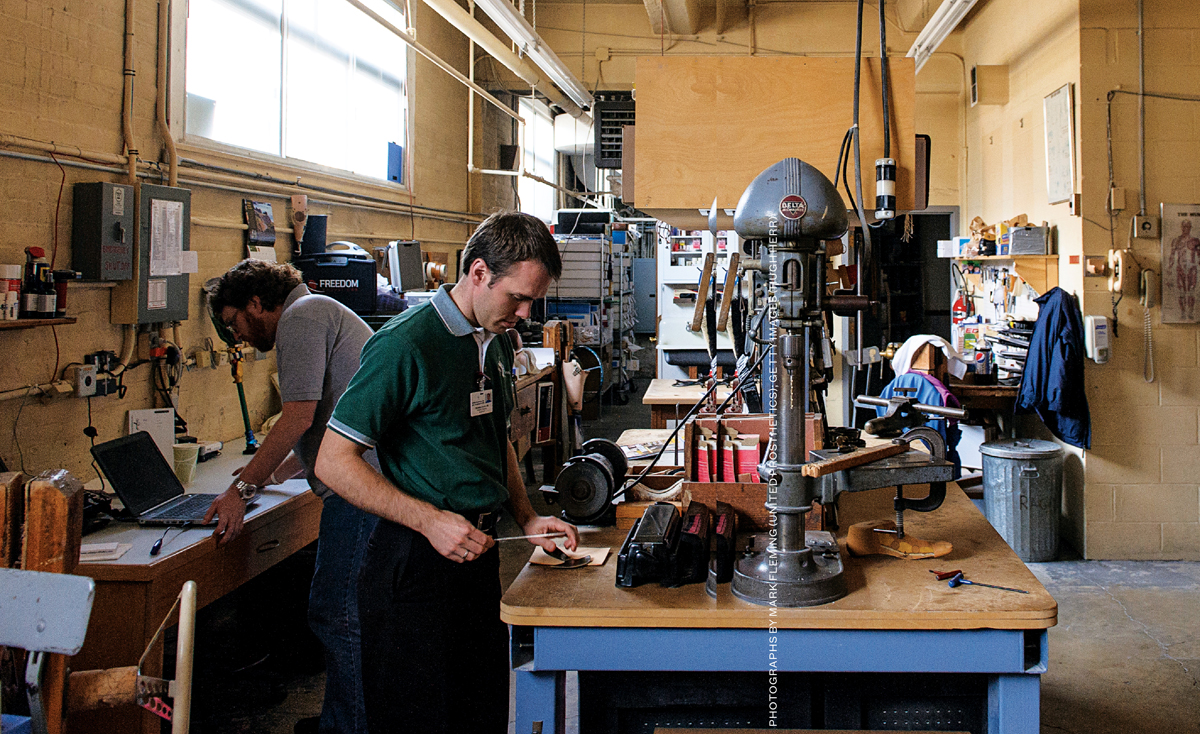All Prosthetics Are Local

Family-owned United Prosthetics—originally opened in Scollay Square and now based in Dorchester—has been fitting patients such as Mark Waitkevich (above) and Dom Marcellino (pictured below) for nearly a century. (Photograph by Mark Fleming)
Of the 16 victims who lost limbs in the Boston Marathon bombings, half have been fit for artificial limbs by family-owned United Prosthetics, an enterprise run for the past 99 years by the Martino family of Dorchester. United’s centennial, this April, will coincide with the anniversary of the marathon blasts. “The marathon is a huge tragedy,” says business manager Chris Martino. Among the victims whom the business fitted is seven-year-old Jane Richard, of Dorchester, whose parents were also hurt and whose brother, Martin, was killed. “For us,” Martino says, “it’s something we see daily. Everybody who comes through this door has lost a limb in some manner.”
Martino says that, despite being an old-school family business, United works hard to keep up with the latest innovations—many of which come from nearby—so that the newest technology can be passed along to customers. “Being in the epicenter of medicine and rehab hospitals and all the other hospitals doing these surgeries—that is beneficial to us,” he says.
Matt Albuquerque, the president of Next Step Bionics & Prosthetics, which has outposts in Newton, Warwick, Rhode Island, and Manchester, New Hampshire (and has fit six marathon victims), takes it a step further. “We’re around the innovations,” he says. “Because of our proximity, we’re in a position to try the technology knowing that we’re very close for adjustments, support, follow-up, and even input.” So if a patient wants to try out a BiOM ankle before committing to it, it’s easy to cruise into the company’s headquarters in Bedford and take a test run. Or if someone has a question about his new ankle, it’s possible to consult BiOM’s engineers on site. For that reason, Albuquerque says, his shop was one of the first to offer the breakthrough ankle: “I don’t know how it all ended up here, but it certainly has in a big way.”

Right: Dom Marcellino. (Photograph by Mark Fleming)

Photograph by Mark Fleming


